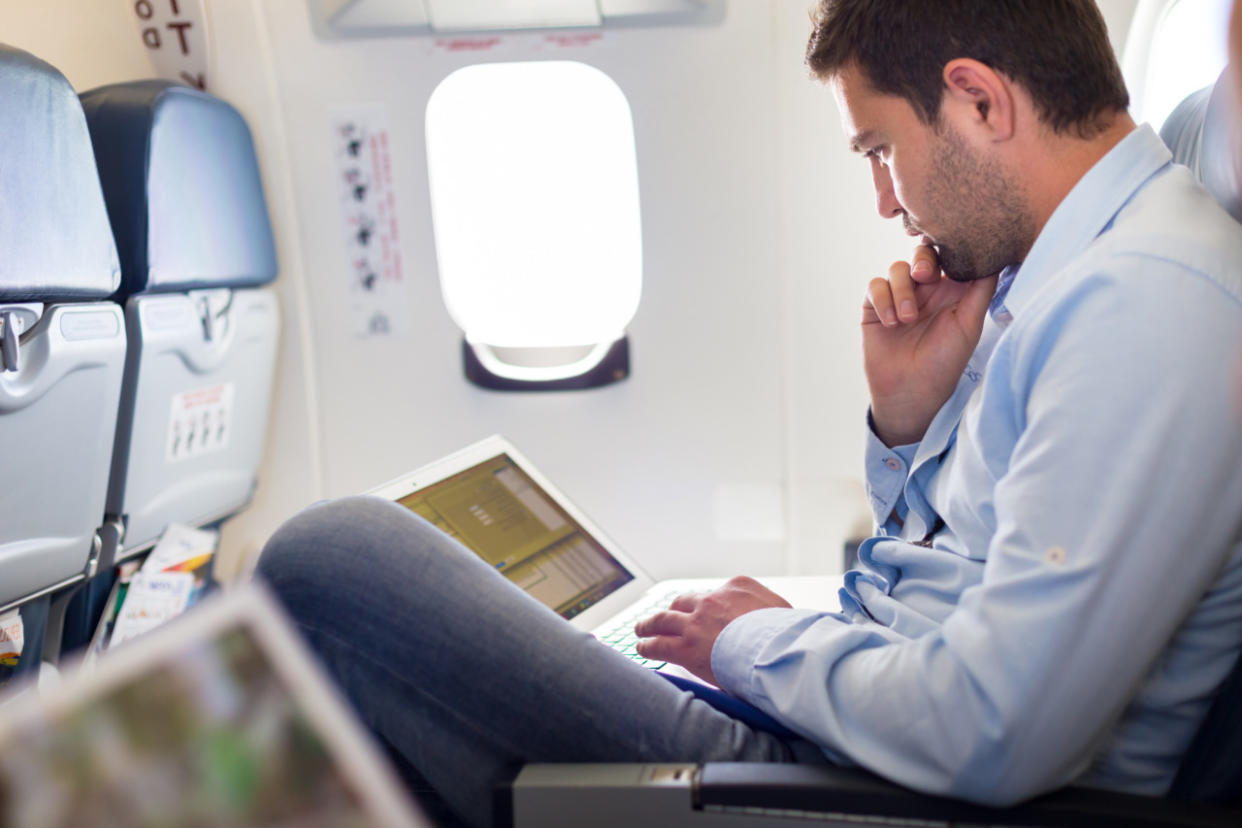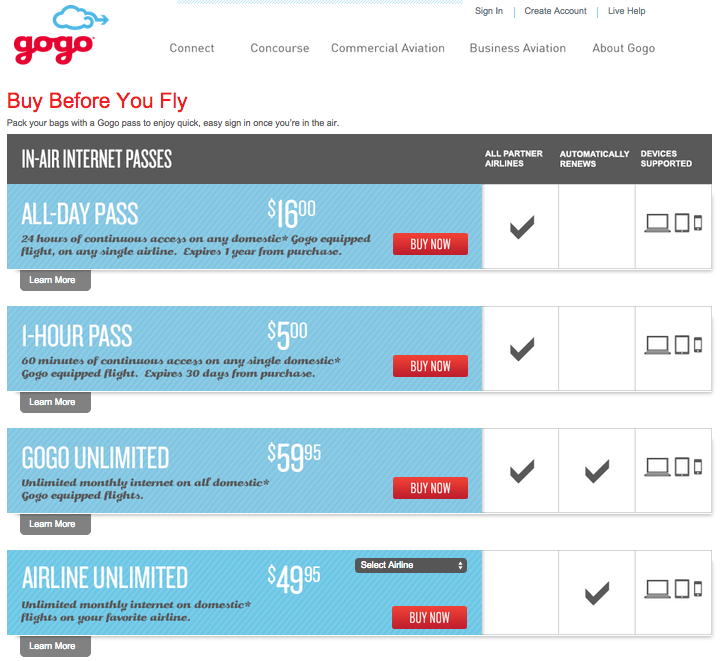Gogo is Well Aware In-Flight Wi-Fi Should be Better

At the end of the day we all just want reliable Wi-Fi in the air. (Photo: Thinkstock)
All frequent fliers have experienced what I like to call “Wi-Fi Rage.” It typically happens in the middle of a cross-country flight. You’ve just paid a fortune for Wi-Fi access. It works at first. And then it doesn’t. It gives you a few minutes of stellar service followed by an hour of that spinning wheel. Emails won’t load and web pages crash. Important data is inevitably lost. You can’t send a text message to your mom! The connection is so slow it becomes maddening, but not slow enough to actually shut the computer and just read a book. You just keep hitting refresh and cursing the Internet, stuck in a negative feedback loop of doom.
Gogo Inc. is one of the largest providers of in-flight broadband Internet service for commercial airplanes in the United States. While some airlines have begun offering their own Internet models, some of them free of charge, the majority of commercial carriers currently rely on Gogo’s systems. Since launching in commercial aircraft in 2008, Gogo has drastically increased its prices. A monthly unlimited pass is now nearly $60 (still a deal if you are a regular flier) and a single flight across the country can cost as much as $40.
The business traveler will almost always pay the higher price. After all, being able to work on a plane lowers the opportunity cost of having to fly on a workday and four to five hours offline can mean a huge loss in productivity. But no one is happy spending money on a product that doesn’t always work properly.
Gogo knows this is a problem. They know they have to fix it and they promise they have a plan in place. We spoke with Ash Eidifrawi , the company’s Chief Commercial Officer to find out what they’re doing to make in-flight Wi-Fi better, when it will happen and if we’ll ever actually see prices drop.
Related: The True Cost of Free Wi-Fi
Yahoo Travel: Can you explain to me, as though I just woke up from a twenty-year coma, how in-flight Wi-Fi actually works?
Ash Eidifrawi: It is really, really, really hard to explain. The simple description is we turn airplanes into Wi-Fi hot spots. You put your router in the plane and the modem in the plane and server on the plane. And you put an antennae on the plane then you can broadcast to it from the ground. It is like using cellular towers. That is the first generation technology. The second generation is to do that from a satellite and that is more complicated. You need to put a more complicated antennae on the plane and you beam the signal from space to the plane. That is what we are working on now.
YT: Why has it gotten so expensive? It hurts me when I look at the prices. I have a monthly pass, which is worth it for how much I travel, but I still get sticker shock every time I log on.
AE: It is definitely more expensive on the cross-country routes, the ones where everyone wants to get on. Those are the routes where half the plane wants to use the Internet. On average, it is around $12 a session.
Related: Airports Around the World With the Fastest Wi-Fi
But if we didn’t make the cross-country routes so expensive too many people would sign on and it would be unusable. With the current technology we can only provide an acceptable experience for some of the passengers, not all of them.

They’re expensive, but if you are a regular in-flight Wi-Fi user then an unlimited pass makes sense. (Photo: Gogo)
Making it expensive keeps some people from signing on and keeps an acceptable level of service on those flights.
YT: And yet, even on flights where it is crazy expensive, it tends to conk out. Why is that?
AE: It doesn’t conk out that much. Our conk out rate is actually better than on the ground, but where it feels slow it is typically because of the people trying to get on the Wi-Fi and trying to stream. The best thing we can do is to add more capacity to create a better experience. We are investing in that. We are investing like no one else is investing. We are a company that has invested billions into this business.
YT: So when you switch to a satellite based system will the prices go back down?
AE: We don’t think about our pricing strategy in terms of our prices going up and down. I can guarantee that passengers will get more bang for their buck….streaming etc and we will allow for different price points to use different services. It will be a better experience.
Related: Lack of Wi-Fi Sparked Love on a Boat in the Galapagos
YT: How are you guys working to make it a better experience?
AE: By investing in satellite technology which will give you better service. When I am on a transcontinental flight and have slow Wi-Fi no one gets more frustrated than I do. We lose sleep over this. We know if a customer isn’t satisfied then the airline isn’t satisfied. The problem for people is that it doesn’t happen fast. It is aviation meets telecom. It takes a while to get new equipment on a plane. With a satellite you have to take a plane out of service for a few days. That takes a lot of planning. It isn’t because we are lollygagging.
YT: I will say that one of the great things about Gogo is the willingness to engage in customer service queries on social media and to offer refunds when things aren’t working. Is that part of the strategy?
AE: It is huge. We know that so many people book specific planes because they have wifi. It transforms the experience. Time is limited. This is specific thing you bought and paid a lot of money for. There is a high beta on the experience. It will either be really good or really bad. We think about social media and customer care as a huge priority. Our team needs to trouble shoot it. The flight attendants can’t trouble shoot it. We have to be responsible.
YT: What new products will we see through 2016 that will improve the experience?
AE: Gogo has (and continues to) develop a number of products that work at varying levels of bandwidth to greater serve the needs of travelers in a number of different scenarios (e.g. flying regionally vs. flying overseas). Gogo TV is also on the list of 2016 roll-outs – it will allow passengers to watch live TV on their personal devices. GOL (Brazilian airline) was the first airline to commit to this new service.
Let Yahoo Travel inspire you every day. Hang out with us on Facebook, Twitter, Instagram, and Pinterest.
Check out our original adventure travel series A Broad Abroad.

